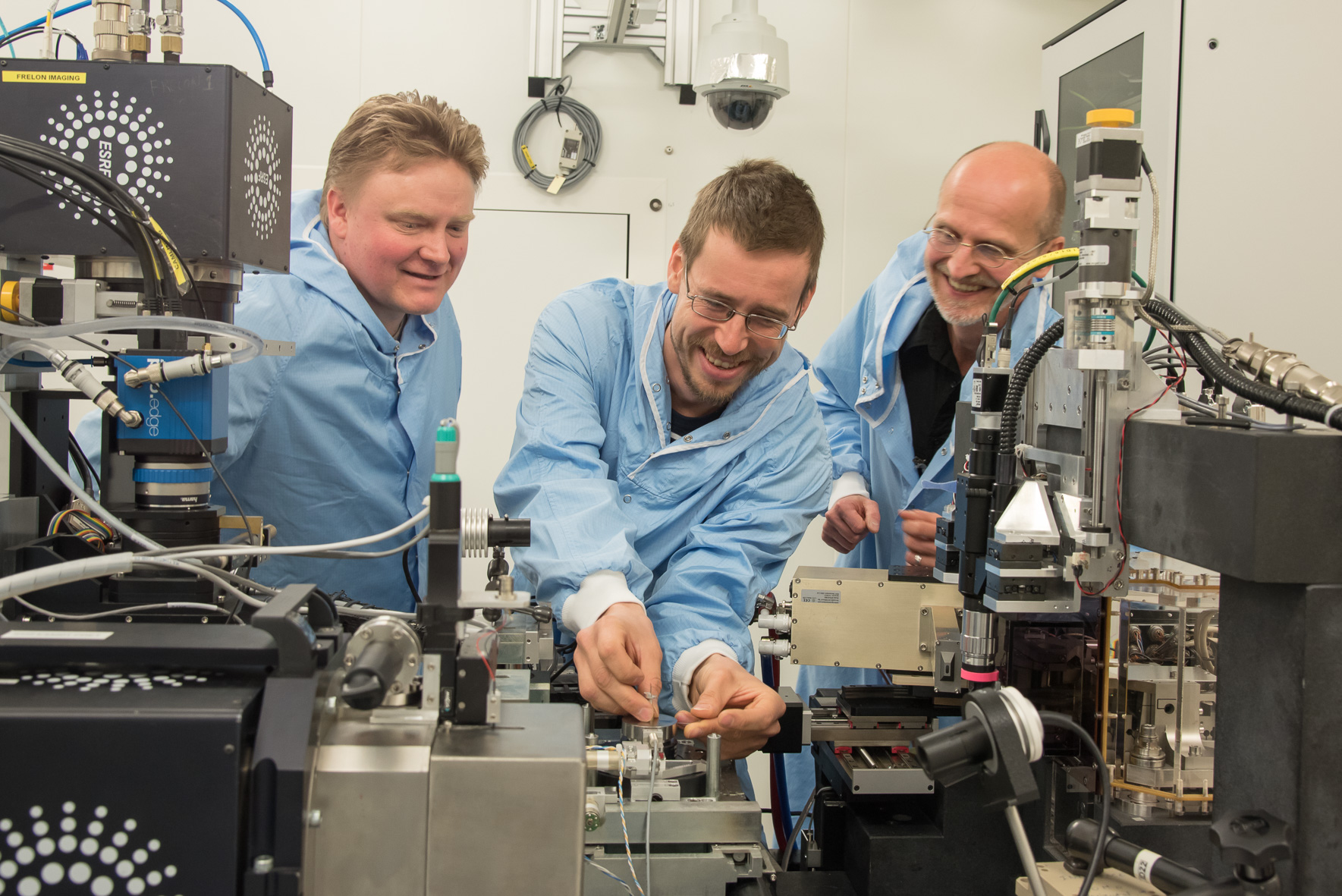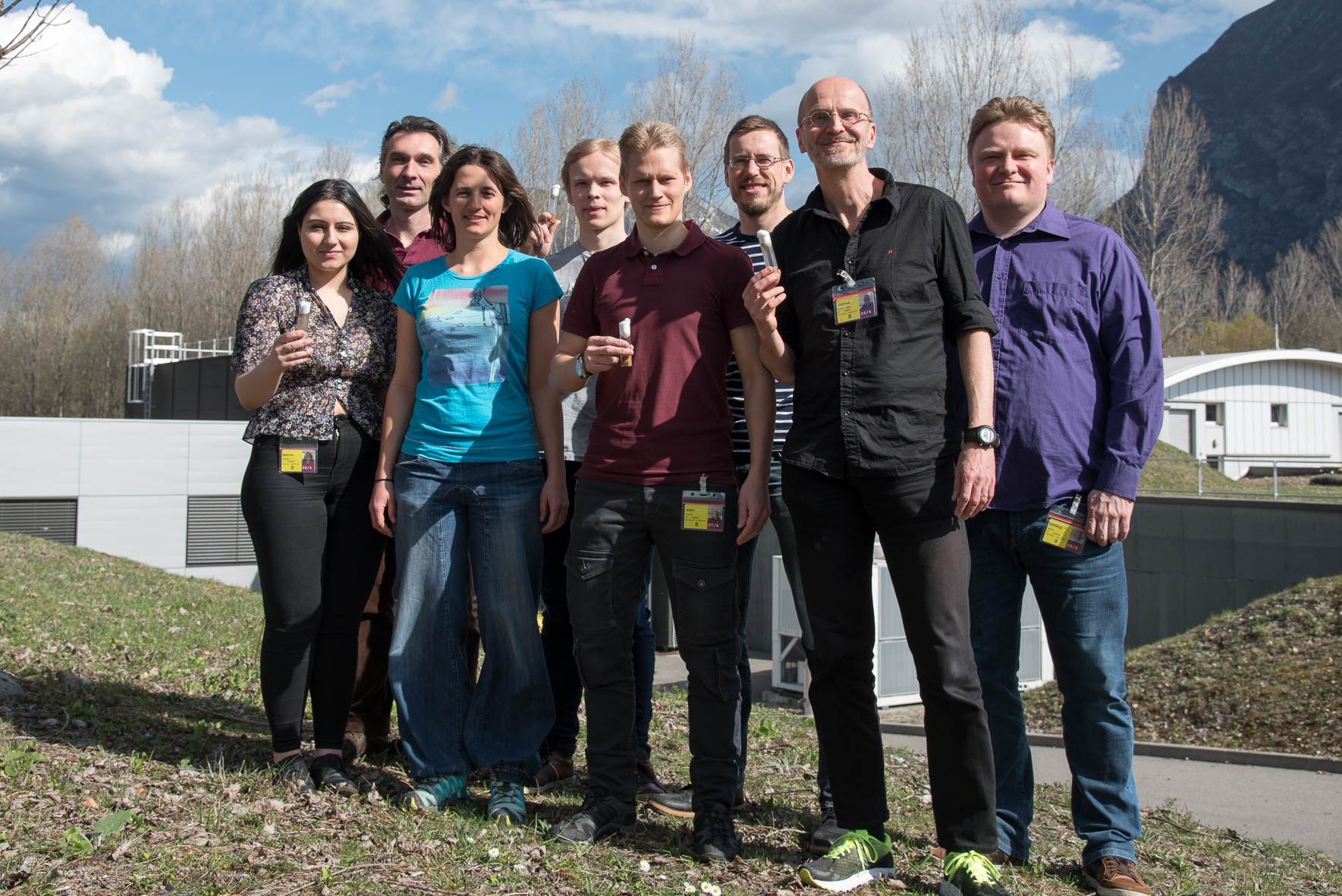- Home
- News
- General News
- Fruit flies see...
Fruit flies see in extremely high definition
18-03-2022
Fruit flies see the world in 3D super-resolution, contrary to previous beliefs, scientists led by the University of Sheffield and the University of Lund (Sweden) have found using the ESRF’s ID16B nanotomography beamline. Their research is published today in PNAS.
Insects' compound eyes typically consist of thousands of tiny lens-capped 'eye-units', which together should capture a low-resolution pixelated image of the surrounding world. In contrast, the human eye has a single large lens, and the retinal photoreceptor array underneath it is densely-packed, which allows the eye to capture high-resolution images. "It had always been claimed that fly's eyesight was very basic, but I couldn't believe that after so many centuries of evolution this was still the case", explains Mikko Juusola, head of the Centre for Cognition in Small Brains at Sheffield University (United Kingdom) and co-corresponding author of the study.
Juusola and colleagues from the University of Oulu (Finland), University of Lund (Sweden) and University of Szeged(Hungary) came to the ESRF to study on ID16B, at the nanometre resolution, the photoreceptors of fruit flies, which are cells in the eye that react to changes in light. They also carried out experiments at DESY.
 |
|
Marko Huttula (University of Oulu, Finland), Jussi-Petteri Suuronen (ESRF) and Mikko Juusola (University of Sheffield, UK) on ESRF's ID16B beamline. Credits: C. Argoud. |
"The ESRF contribution was critical, as it gave us the first ‘global’ evidence, including the high-resolution, high-speed dynamics of how photoreceptors contract photomechanically to light changes across the fruit fly's left and right compound eyes", explains Juusola. The brilliance of the ESRF was key in this research, as Rajmund Mokso, scientist at the University of Lund and co-corresponding author, says: "Thanks to the high brilliance of ESRF, we could capture nanoscale images of a living organism at ID16B in vivo with a spatio-temporal resolution and image contrast not achievable elsewhere".
After analysing the data of the synchrotron experiments, the team added mathematical calculations and a large arsenal of physiological and behavioural experiments.
The researchers discovered that flies are able to see in high-resolution stereo vision because their photoreceptors gather more information about the surroundings than previously thought possible by twitching in an organised way. The photoreceptors do this by responding to light changes with ultrafast mirror-symmetrical movements, called photoreceptor microsaccades, so when the fly moves forward, they are gathering images that both move with the world and against it simultaneously.
The image information the photoreceptors gather is therefore not coarsely pixelated, but continuous and much more detailed, which is then sent to the brain and processed into what the flies see.
 |
|
The research team from left to right: Neveen Mansour, Raimund Mokso, Julie Villanova, Joni Kemppainen, Paulus Saari, Jussi-Petteri Suuronen, Mikko Juusola & Marko Huttula. Credits: C. Argoud. |
"These new results change radically the current understanding of how the insect compound eyes work", explains Juusola. "The paper changes the viewpoint of their eyes from being like 'two static low-resolution 2D camera systems with immobile sensors' -generating two poor-quality images-, to a dynamic two-eye imaging system, where pixels are not still but scan rapidly and mirror-symmetrically when responding to light to build up a three-dimensional high-resolution image of the world", he adds.
The findings could help better understand the human eyesight and have certain applications in technology: "This work could have implications for human eyesight, as the nervous system of a fruit fly has evolved to perceive the three-dimensional world efficiently, and us and fruit flies likely use similar principles in order to see in stereo. Furthermore, the mathematical theory about mirror-symmetric visual information sampling that we present with these results can be used to improve man-made sensors and is directly applicable for machine vision and robotics", concludes Juusola.
Reference:
Kemppainen, J. et al, PNAS, 17 March 2022. https://doi.org/10.1073/pnas.2109717119
Text by Montserrat Capellas Espuny



